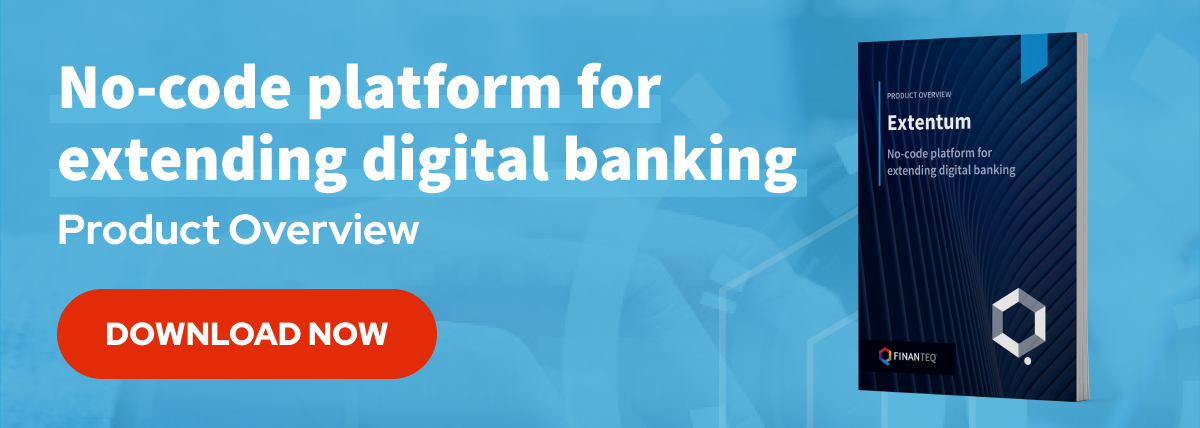How much does it cost to create a mobile banking application? What should you particularly keep in mind when managing a budget for mobile banking app development? How can you optimize the costs of building a mobile banking application while maintaining the best quality of the app? The answer can be found below.
In today’s fast-paced world, where digital transformation is the name of the game, banking institutions are increasingly relying on technology to meet the ever-evolving needs of their customers. Mobile banking applications have emerged as essential tools for serving clients efficiently and effectively. However, building a successful banking app is far from a simple task; it involves a complex interplay of various components, each wielding a considerable influence on the project’s budget.
In this article, we will embark on a journey through the intricacies of crafting a banking app, shedding light on the key components that financial institutions must consider. By gaining a comprehensive understanding of these components and their respective impacts on the project’s budget, banking professionals will be better equipped to make informed decisions, allocate resources strategically, and ultimately deliver a banking app that not only meets but exceeds customer expectations.
The process of building a banking app is akin to constructing a modern marvel, requiring a careful balance between innovation, functionality, security, and fiscal responsibility. Each facet of app development plays a vital role in shaping the final product, and understanding their financial implications is crucial for delivering a solution that not only stands the test of time but also enhances the overall customer experience. Let’s delve deeper into these essential components and their financial footprints.
We will also dive into how leveraging no-code platforms like Extentum can save time and money.
App development cost – what to consider when embarking on mobile banking app development
Now, you have decided to develop a new mobile banking app from scratch. Perhaps it is driven by the need to replace an old application, satisfy more customers, outpace the competition, and/or achieve other business goals.
Building a banking app is a complex process that demands financial and time investments. It requires clear business goals, extensive research, and selecting the right vendor.
Define the functionality of the application and the plan for its introduction in subsequent versions
Advanced features and services – balancing functionality with app development budget
The range of features and services offered by a banking app is a significant driver of the project’s budget. Banking apps have evolved far beyond simple balance inquiries, and today’s users expect a comprehensive suite of capabilities at their fingertips.
Modern applications should include:
- Account access – providing customers with real-time access to their account balances, transaction histories, and account details.
- Fund transfers – enabling seamless transfers of funds between accounts, to other bank customers, and even to external accounts.
- Payments – facilitating various payment options, including bill payments, peer-to-peer transfers, and digital wallet integration.
- Card management – allowing users to manage their debit and credit cards, including card activation, deactivation, and setting spending limits.
- Financial reports – offering detailed financial insights, including statements, transaction categorization, and spending analytics.
The challenge lies in balancing these advanced features with the project’s budget. Each additional feature introduces complexities in development, testing, and ongoing maintenance. Moreover, the user experience must remain smooth and intuitive despite the increasing complexity of the app.
Financial institutions must carefully assess which features are essential to meet customer expectations and regulatory requirements and which can be considered value-add. By prioritizing features and functionalities and aligning them with budgetary constraints, banks can strike a balance between offering a robust app and managing project costs effectively.
Furthermore, the decision to develop in-house or partner with fintech providers for specific functionalities can impact the budget significantly. In-house development provides control but usually require more substantial upfront investments, while partnerships may offer cost efficiencies but require careful management and integration.
In summary, the budgetary impact of advanced features and services in a banking app is substantial. Financial institutions must make strategic decisions about which functionalities to prioritize, whether to build in-house or vendor and how to ensure a seamless user experience, all while staying within budget constraints. This strategic approach will result in a banking app that meets customer expectations while effectively managing costs.
Security and data protection – a prerequisite for trust
In the realm of banking, perhaps more than in any other industry, security and data protection are non-negotiable. These aspects not only safeguard sensitive customer information but also underpin the very foundation of trust between the bank and its clients. As such, they represent a significant portion of the budget for building a banking app.
Here’s how security and data protection influence the budget.
Advanced security measures
Banking apps must implement advanced security measures, such as two-factor authentication (2FA), biometric authentication (e.g., fingerprint or facial recognition), and strong password policies. These measures ensure that only authorized users can access their accounts and conduct transactions. Implementing and testing these security features can be costly.
Data encryption
Protecting customer data is paramount. Data encryption ensures that sensitive information, such as financial transactions and personal details, is securely transmitted and stored. This requires the use of robust encryption algorithms and continuous monitoring, which adds to the project’s costs.
Transaction monitoring
Banking apps often employ real-time transaction monitoring to detect and prevent fraudulent activities. Developing, deploying, and maintaining such monitoring systems is an ongoing expense but is crucial to protect both the bank and its customers.
Regulatory compliance
The banking industry is subject to stringent regulations governing data protection and security. Ensuring compliance with these regulations demands ongoing investments in audits, assessments, and adjustments to meet evolving compliance standards.
Regular updates
Cybersecurity threats constantly evolve, requiring regular updates and patches to address vulnerabilities. These updates are necessary to keep the app secure but come with associated costs.
While the expenses related to security and data protection may seem substantial, they are an absolute necessity. Failure to invest in robust security measures can lead to devastating breaches, legal consequences, and a loss of customer trust—each of which can result in far greater financial losses than the initial security investments.
Moreover, robust security measures can be a competitive advantage. Customers are more likely to trust a banking app with a strong security track record, potentially leading to increased usage and loyalty.
In conclusion, security and data protection represent a vital portion of the budget for building a banking app. These investments are not only a safeguard against potential threats but also a cornerstone of customer trust, making them an indispensable aspect of app development. Banks must prioritize these expenditures to ensure the integrity of their digital services and the protection of their customers’ financial well-being.
Cross-platform compatibility – reaching a diverse user base
Cross-platform compatibility is a crucial consideration in the budget for building a banking app. In today’s diverse technology landscape, users access banking services through a wide range of devices and operating systems, including smartphones, tablets and wearables, running on iOS, Android and maybe more in the future. Ensuring that the banking app is accessible across these various platforms adds complexity and cost to the development process.
Below are the key factors to consider.
Development for multiple platforms
To reach the broadest possible audience, banking apps often need to be developed separately for iOS and Android, as these are the dominant mobile operating systems. Developing and maintaining two versions of the app require additional resources and expertise.
User experience consistency
It’s essential to provide a consistent user experience across all platforms to maintain brand identity and ensure ease of use. This means that the app must look and function similarly, regardless of the user’s device or operating system. Achieving this consistency can be challenging and may require additional development efforts.
Testing and quality assurance
Extensive and automated testing is necessary to ensure that the app functions correctly on all supported platforms. This includes automated testing on various devices, screen sizes, and operating system versions. The mobile app development cost of testing can increase significantly with the number of supported platforms. However, it decreases significantly when efficient test automation is implemented
Maintenance and updates
As operating systems and devices evolve, the app must be updated to remain compatible. This ongoing maintenance is an important consideration in the budget, as it ensures that the app continues to function smoothly for all users.
While cross-platform compatibility undoubtedly adds to the budget, it is a strategic investment. It allows the banking institution to reach a diverse user base and ensures that customers can access their accounts and conduct transactions on their preferred devices. Failing to provide cross-platform compatibility may result in a loss of customers who cannot use the app on their chosen device or operating system.
Furthermore, some technologies, such as hybrid app development frameworks, can help reduce costs by allowing developers to write code that works on multiple platforms. However, these frameworks increase the risk of not being properly supported in the future and may come with trade-offs in terms of performance and user experience. So it’s essential to carefully evaluate the best approach for the target audience. You can read more in our article: Native vs cross-platform mobile banking application.
Continuous updates and enhancements – adapting to an ever-changing landscape
The world of technology is in a constant state of flux, and the banking industry is no exception. Regulatory changes, evolving customer expectations, and emerging technologies necessitate continuous updates and enhancements to a banking app. These ongoing efforts are vital to staying competitive and ensuring that the app remains a valuable asset to both the bank and its customers.
Here’s how continuous updates and enhancements impact the budget.
Regulatory compliance
Banking is a highly regulated industry, and financial institutions must adapt to changes in laws and regulations. Compliance with new requirements often involves updates to the app’s features, reporting, security measures, and data handling processes. These changes may incur legal and consulting fees.
Customer feedback
Customer feedback is a valuable resource for improving the app. User suggestions and reported issues must be addressed promptly to enhance user experience. This may include periodical updates to user interface design, bug fixes, and feature enhancements.
Emerging technologies
To remain competitive, banking apps should embrace emerging technologies such as artificial intelligence, machine learning, and blockchain. Implementing these technologies may require additional investments in research, development, and integration.
User expectations
As technology evolves, user expectations change. Customers expect banking apps to offer new and convenient features. Meeting these expectations often involves the development of new functionalities and regular app updates.
Competitive advantage
Banking institutions that invest in continuous improvement can gain a competitive advantage. A well-maintained and regularly updated app can attract and retain customers, potentially leading to increased revenue and market share.
While continuous updates and enhancements are essential for the longevity and competitiveness of a banking app, they represent ongoing expenses that must be factored into the budget. Neglecting these aspects can result in an outdated app that fails to meet customer expectations or regulatory requirements.
To manage these costs effectively, banks often require tailored services from vendors for app maintenance and enhancements. Additionally, vendor helps to prioritize updates based on their strategic goals, regulatory requirements, and customer feedback.
In conclusion, continuous updates and enhancements are a vital aspect of the budget for building a banking app. Financial institutions must allocate resources to adapt to regulatory changes, address customer feedback, embrace emerging technologies, and meet evolving user expectations. By doing so, they can ensure that their app remains relevant, competitive, and capable of delivering a superior banking experience.
Customer support quality – investing in user satisfaction
In the world of banking apps, the importance of excellent customer support cannot be overstated. Customer support quality directly impacts user satisfaction and retention rates. Therefore, it’s essential to allocate resources to provide robust and responsive customer support, which in turn affects the budget for building and maintaining the app.
Here’s how customer support quality influences the budget.
Support team personnel
The backbone of effective customer support is a skilled and knowledgeable support team. This team includes customer service representatives, technical support specialists, and subject matter experts. MD rates, training, and benefits for these personnel are significant budgetary considerations.
Technology and tools
Equipping the support team with the right technology and tools is essential for providing timely and accurate assistance to users. Investments in customer support software, ticketing systems, and communication tools are necessary expenses.
Training and development
Continuous training and development programs ensure that the support vendor stays up-to-date with the app’s features, updates, and best practices. These programs may include training sessions, certifications, and skills development courses.
- Availability. Quality customer support should be available to users whenever they need assistance. This often requires round-the-clock support, which may involve shift work and overtime pay.
- User education. A proactive approach involves educating users about the app’s features and how to use them effectively. This can reduce the volume of support requests and improve the overall user experience. Investment in tools such as low/no code tool – Extentum, which can deliver tutorials and training for users, might be crucial to maintain cost effectively.
- Feedback and improvement. Collecting user feedback and using it to improve the app and customer support processes is essential. Feedback analysis and process improvements require dedicated resources.
While customer support quality represents an ongoing investment, it is a vital aspect of user satisfaction and loyalty. A well-supported user base is more likely to continue using the app, recommend it to others, and trust the bank with their financial needs.
Moreover, quality customer support can help resolve issues promptly, reducing the likelihood of costly disputes, refunds, and legal challenges. It also plays a role in shaping the bank’s reputation and can contribute to attracting new customers.
Financial institutions must balance the costs of customer support with the benefits it provides. They may consider outsourcing customer support, investing in self-service options, or using chatbots and AI-driven solutions to provide timely assistance cost-effectively.
Moreover, the geographic location of customer support teams and technology providers can introduce both cost-saving opportunities and potential risks related to cultural and regulatory differences. Financial institutions must carefully evaluate these factors to strike the right balance between quality and cost-effectiveness.
Lastly, the team size is a dynamic element that can fluctuate throughout the project, impacting costs at each stage. Careful consideration of these factors is essential to make informed decisions, optimize the mobile banking app development budget, and ensure efficient resource allocation.
In summary, customer support quality is a crucial factor in the budget for building and maintaining a banking app. Banks must allocate resources to hire and train skilled support personnel, provide the necessary tools and technology, and continuously improve their support processes. By doing so, they can enhance user satisfaction, trust, and the overall success of their app.
Optimizing mobile banking app development – the cost-efficiency of wireframing
Wireframing plays a crucial role in the development of mobile banking apps. It serves as the blueprint for the app’s layout and functionality, ensuring the smooth integration of banking processes.
In essence, wireframes are like detailed maps, charting out menus, navigation paths, buttons, and content placement within the app.
The cost associated with wireframing can vary depending on the app’s complexity and the level of detail required. However, it should be seen as a vital investment in the overall success of the project. Wireframing streamlines the development process and significantly contributes to the creation of a mobile banking app that is user-friendly, efficient, and cost-effective.
Consider wireframing as the foundation upon which efficient integration, user satisfaction, and cost optimization are built in the world of mobile banking app development.
Designing the user interface (UI/UX) – where beauty meets functionality
Following the wireframing stage, the importance of UI/UX design cannot be overstated in terms of user engagement. Developing a visually appealing and user-friendly interface is absolutely essential for mobile banking apps. This phase involves a meticulous process that includes wireframing, prototyping, and the actual design of the app’s user interface.
The expenses incurred during this phase can vary significantly depending on the complexity of the design and the number of screens required. A sleek and user-friendly interface not only enhances the overall user experience but also plays a pivotal role in the app’s success. A well-considered UI/UX design boosts user engagement and satisfaction.
However, it’s important to note that achieving an intuitive and aesthetically pleasing design can result in an additional investment in the overall development cost.
The development team – a crucial cost factor
The cost of the development team can be significantly influenced by three key factors, each of which merits careful consideration: the chosen collaboration model, the geographical location of the development team, and the size of the team.
Collaboration model
Selecting the right collaboration model is a pivotal decision. You can opt for freelancers, in-house teams, or specialized vendors. Freelancers often appear cost-effective but may raise concerns about the quality and consistency of work delivered. In-house teams provide control and communication advantages but can be more expensive due to salaries and overhead. Specialized vendors may offer a balance between expertise and cost, but the choice depends on your specific project needs and budget.
Geographical location
The geographical location of your development team is another critical factor. Hourly rates for programmers can vary significantly between regions. For example, the United States generally commands higher rates, while countries like India often provide more cost-effective options. It’s crucial to strike a balance between cost savings and the quality of work when choosing the location of your team.
Team size
The size of your development team is a dynamic element that can impact costs at each stage of your project. A larger team may expedite development but could also increase costs. Conversely, a smaller team might be more cost-efficient but potentially slower in delivering the project. Carefully assess your project’s scope and timeline to determine the ideal team size that balances cost and efficiency.
In conclusion, the development team is essential to optimize your mobile banking app development budget. Balancing factors like collaboration model, geographical location, and team size ensures you strike the right equilibrium between cost-effectiveness and project success.
The general formula
When it comes to a quick and relatively straightforward method for rough budget estimation of a project, the following formula is commonly used:
Rough cost of application development
=
Number of team members x Estimated project duration x Rate per Man-Day (1MD)
The importance of selecting the right mobile banking application vendor
Choosing the right vendor and development team ensures your project aligns with your budget. When working on an idea, it’s worth collaborating with a company specializing in app development like ours.
They can provide insights on how to define best the fundamental services of the idea, how to launch it profitably, and how to establish the groundwork for future growth and success. By partnering with an app development partner, you can ensure that your idea will be implemented most efficiently and effectively. Below, we tell you how it is possible.
Choosing Finanteq – our best decision for cost-effective mobile banking development
Finanteq stands out as a valuable partner for cost-effective mobile banking app development. Here’s why:
- Outstanding squads. Cross-skilled development squads of experienced professionals. Technical excellence in all aspects of programming guarantees the highest app quality level.
- Comprehensive team. Finanteq provides dedicated, high-performing, cross-skilled development squads with extensive banking experience, ensuring you don’t have to worry about hiring, onboarding, or training: pure time and cost savings.
- Distinctive technology. Native app development, resulting in reliable, high-quality, and best user experience applications for banking. If you are tempted to save on technology, remember that the most significant savings come from the quality we guarantee.
- Efficient work methods. Short communication loop, constant waste elimination, and efficient use of human resources. Years of practice have allowed Finanteq to develop cost-optimized work methods that increase efficiency, reducing development time and costs.
- Full automated functional test coverage. Short regression testing time, drastically improving time to market and reducing costs.
- Optimized processes. Budget management with optimized operations.
- Extreme efficiency. Delivering maximum business value in the shortest possible time.
- Innovative solutions. Finanteq offers a wide range of tools, off-the-shelf libraries, and innovative products, enabling banks to create and implement applications efficiently while maintaining maximum business value. Read more about Extentum below.
No-code platform Extentum – how ready-made solutions can save you time and money in mobile app development
Finanteq’s no-code platform is a real game-changer in mobile app development. Extentum is a revolutionary no-code platform tailored specifically for the financial sector. Financial institutions can create fully functional mobile banking apps without extensive coding expertise with the tool.
This not only accelerates development but also significantly reduces costs.
In short, being both efficient and innovative, Extentum empowers financial institutions to be more efficient and stay ahead of the competition. Here’s how:
- Rapid development: No-code platforms allow you to build apps faster, reducing development time and costs. Introduce new features to the app within hours, not months or years! If you want to dive deeper, please visit our blog post: 7 use cases of no-code in extending digital banking.
- Flexibility: Customization is key in the financial sector. The tool enables you to tailor your app to meet business needs without extensive coding.
- Maintenance made easy: With no-code platforms, updates and maintenance are simplified, saving time and money in the long run.
- Security: Extentum is built with safety in mind, ensuring that your app meets the highest data protection and regulatory compliance standards.
Why is Extentum the best when it comes to mobile banking development? Read more in our article: The best no-code mobile banking app development platform.
Developing a mobile banking app entails numerous costs, from requirements gathering to compliance with legal and security standards. However, solutions like Finanteq’s Extentum streamline development, making it efficient and cost-effective. By leveraging low-code and no-code platforms, financial institutions stay competitive while saving time and money in the dynamic mobile banking app landscape.
See also our Product Overview:

Conclusion
The budget for building a banking app is a multifaceted endeavour, influenced by a variety of factors, each playing a pivotal role in shaping the final product. As we’ve explored, advanced features and services, security and data protection, cross-platform compatibility, continuous updates and enhancements, and customer support quality are all essential components that demand careful financial consideration.
Yet, it’s crucial to remember that while these components contribute to the cost, they also contribute to the app’s value and success. A well-designed and meticulously crafted banking app can differentiate a financial institution in a competitive market, bolster trust, and foster customer loyalty.
Balancing the budgetary demands of these components with the strategic goals of the bank is a challenging yet rewarding effort. Financial institutions must make informed decisions, prioritize investments based on their long-term vision, and remain agile in the face of evolving customer expectations and industry trends.
Ultimately, a banking app is not just a technological solution; it’s a dynamic tool that empowers customers, streamlines operations, and shapes the future of banking. By recognizing the importance of these components and understanding their financial implications, banking professionals can navigate the complex landscape of app development, delivering a product that not only meets but exceeds customer expectations and secures a competitive edge in the ever-evolving world of digital banking.
See more on our mobile banking website.







